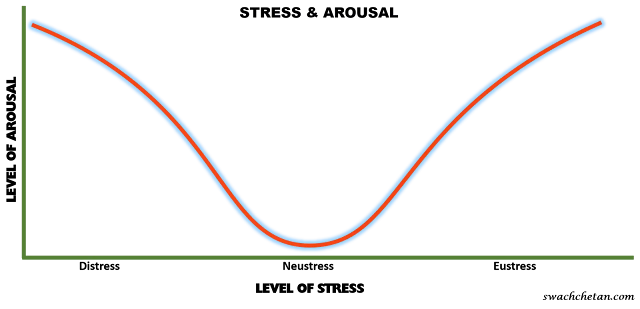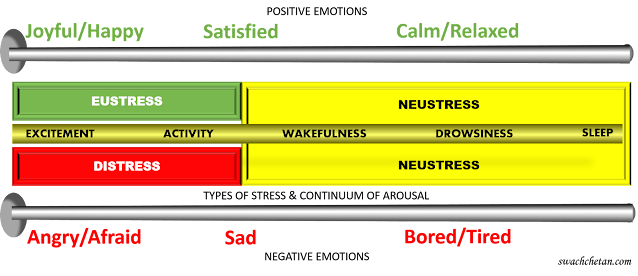 |
| Photo by Stephen Paris from Pexels |
What is Stress?
Almost everyone talks about stress. However,
until we have clarity in understanding certain nuances about stress, we will be
fighting an enemy about whom we know very little.
Stress is also known as adjustive
demands mainly because it indicates how we respond or react to the situations
within or around us.
Stress is mistakenly referred to as being
negative, which is itself a misunderstanding of the concept. We have discussed
that in “Is stress necessary for survival” as to why it is not an enemy?
Stress is not only negative but also positive
or neutral. We shall consider more about this later.
Even if someone is not doing anything, there
are still demands from the environment that need to be fulfilled. For instance,
almost all our internal organs keep functioning to keep us alive. Whether we
are tensed, relaxed, or happy the heart cannot miss a beat, our breathing
cannot stop, the body’s temperature should be balanced, and our need for food,
water, clothing, shelter, etc., continue.
Thus, stress is part of the motivational
process to maintain equilibrium or balance in our physical, psychological, and
social environment.
WHAT ARE ITS TYPES?
Sometimes, stress is classified into three
types: Acute, Episodic Acute, and Chronic Stress (See Psychology Today).
This classification is according to the American Psychological Association, as
the above article indicates. This is inappropriate because almost every disease
or disorder has acute and chronic stages. These terms refer to the degree and
duration of stress, rather than the types of stress.
A categorization of types is necessitated to
distinguish between how one type manifests as against the other. Another most
important requirement is that the types identified must be mutually exclusive.
It means that one is significantly distinct from the other and one type should
not have any characteristics that overlap with another type.
This does not happen when we classify stress
as acute or chronic. All symptoms like anxiety, anger, depression, etc. are
present in both types of stress.
And as it is believed, we don’t get used to
chronic stress. It is like saying that a patient with chronic kidney disease is
well-adjusted to the problem. Do we get used to suicides, addictions,
homicides, economic crises, enmity, war, etc.?
Let us first understand the different types
of Stress – Eustress, Distress, and Neustress.
Eustress
(Selye, 1982) is positive stress that leads to pleasant emotions like joy,
contentment, pleasure. The opposite of this is Distress (Lazarus
& Folkman, 1984), which is negative stress that leads to unpleasant emotions
like anger, fear, sadness, jealousy, irritability.
Neustress
(Morse & Furst, 1979) is falsely depicted as it is neither eustress nor
distress. However, neustress has both eustress and distress. More details on
how it is a balance between the two extremes of stress are clearly explained in
WHAT
IS NEUSTRESS?
The word ‘stress’ should
represent Neustress. However, it is usually associated with Distress. We shall
know more about distress in other articles: WHAT
IS DISTRESS and Types
of Distress and how to Overcome Them?
Once in a while, we go through instances in
our life where we are happy. This is the state called Eustress. A complete
overview of eustress is provided in WHAT
IS EUSTRESS?
STRESS & AROUSAL
Neustress differs from the other types of
stress in that the duration of the experience of the stress level is
considerably greater. If you consider 24 hours, then more than 20 hours will be
spent by the individual in neustress.
However, the degree of arousal in terms of
excitement is highest in both eustress and distress. The level of arousal comes
to normal during neustress. The diagram above shows how the arousal level
increases when there is a shift from neustress.
Arousal
Arousal refers to a level of activity that is
measurable both physiologically and psychologically. The continuum of Arousal
varies from excitement, followed by activity, wakefulness, drowsiness, and
sleep.
CONTINUUM OF
AROUSAL
An organism mediates through the Reticular Formation
in the brainstem to regulate the level of arousal needed by it. During
Excitement, all neural activities are geared up to meet the contingencies. It
could be winning a lottery or finding an armed robber at home.
Both cortical arousal and sub-cortical
arousal are heightened at this level whereas, during sleep, the neural activity
is reduced considerably. Depending upon the need of the hour, we oscillate
between these two extremes.
(Please note that the neural activity
increases during dreams though the individual is sleeping. This aspect is not
relevant here and is considered in the book, “Sleep Saves Life and Restores Wellbeing”).
The cortical arousal is measurable through changes
in brain waves (electroencephalogram – EEG) and the sub-cortical arousal is
measurable through changes in blood pressure (sphygmomanometer).
Arousal & Stress
When the types of stress are compared with
this continuum, we see that both Eustress and Distress are displayed between
Excitement and Activity. We can sleep only when we are relaxed and not when we
are excited or active. The wakefulness, drowsiness, and sleep are characterized
by Neustress.
Individuals can’t be happy throughout the 24
hours, nor can they be sad all the time. They revert to neustress after a few
minutes of experiencing positive or negative emotions.
In case they are unable to do so, we label
them as having a disorder. This is what happens in bipolar disorders where the
affected individual spends more time in either elation or depression. In other
words, people with disorders remain excited most of the time in a day.
Arousal, Stress, & Emotions
We can recognize these variations in arousal and stress through the experience of emotions.
When we experience joy or happiness, we are
excited in the same way as when we experience anger or fear. The level of
arousal is slightly lower than this when we experience contentment or sadness.
During neustress, we are either calm and relaxed, or bored and tired.
More about this in How
are Emotions Connected to Stress?
Thus, neustress refers to a normal state
whereas the ups and downs are attributed to eustress and distress. So, instead
of bringing down the stress level, we have to make sure that our neustress is
not unduly affected by either eustress or distress and we can maintain
the balance between the two extremes.
64 NAVA
VIDYA or 64 NEW SKILLS
















Please do not include any spam links in the comment box.